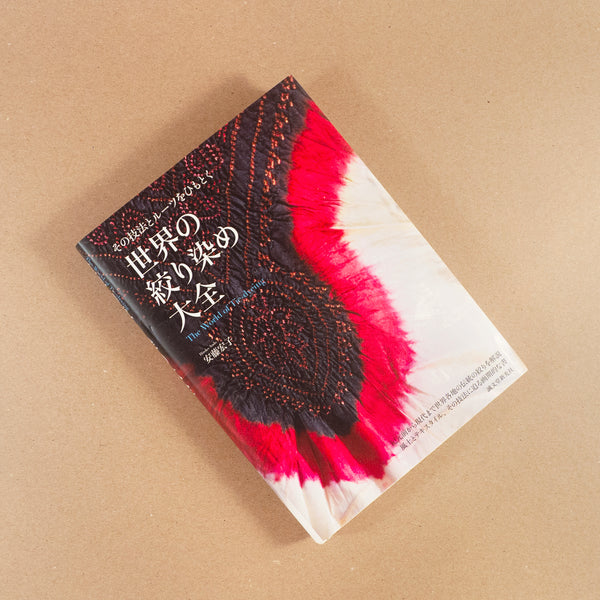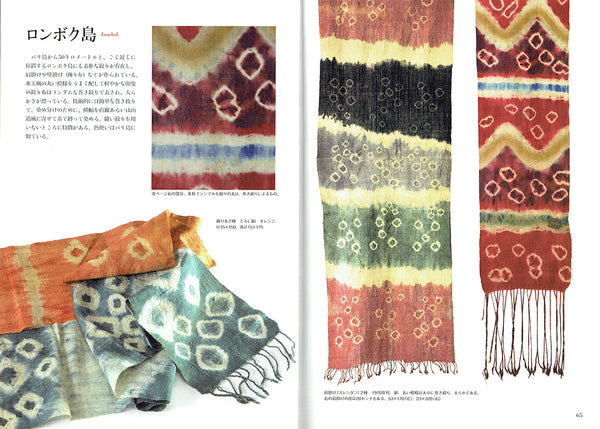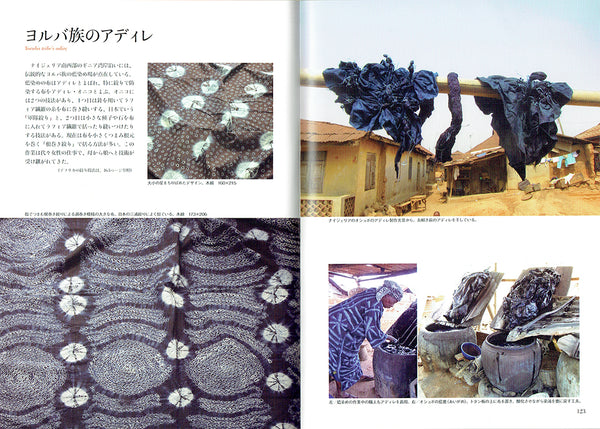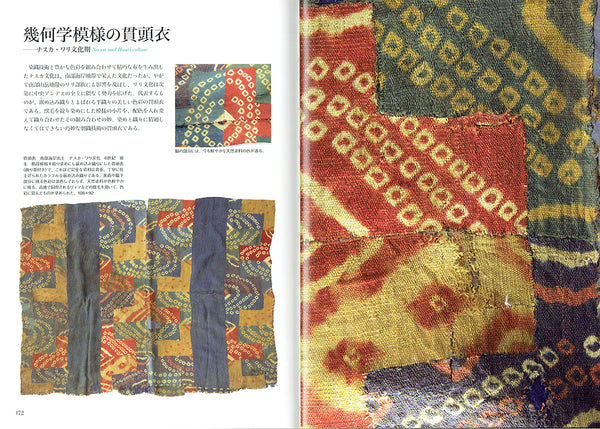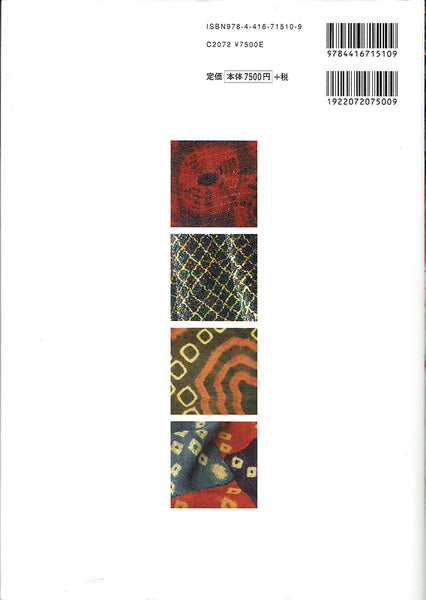The World of Tie-Dyeing (JP)
However, fragments of cloth with simple expressions using the basic techniques of tie-dyeing have been excavated from ancient sites across the world, such as in Peru and Central Asia. The shibori which occurred and propagated throughout the world developed into various traditions of shibori dyeing each with their own customs, beliefs, prayers, and expressions representative of each culture.
This book surveys regions across South Asia, Southeast Asia, and the Pacific, showing how the tie-dyeing technique called "bandhani" or "laharia" which is said to be born in India is also associated with Indonesian islands such as Java, Bali, and Lombok, used to dye surendan (shawl, breastplate) and ceremonial cloth. Other highlighted regions include Pakistan, Cambodia, and the Philippines. In particular this book focuses on a unique original method of shibori found in Vanuatu in the South Pacific. In the Middle East and Central Asia, the book examines shibori traditions of Turkmenistan and Syria, woolen goods and felts in Mongolia and Tibet, and indigo-dyed cotton goods produced by ethnic minorities in China.
Across Africa, techniques of great interest which are practiced to this day include the use of raffia palm fiber to aid shibori on narrow handwoven cotton bands, and methods of sewing sticks, stones, leaves and the like on cloth to create a resist. These various techniques produce cloth of bold design. More than variation between nations, techniques and design can vary completely between ethnic groups as well.
In Japan, the book examines the uninterrupted tradition of shibori dating from ancient times and inspects its practice in the modern day.
In total, this book surveys the history and tradition of shibori in 24 countries across the world, not only gathering simple information on techniques, but drawing connections between the lives of people who practice shibori.
Written by Hiroko Andō; published in Japan by Seibundo Shinkosha (2016). 19 x 26.5cm (7.5 x 10.5in); 224 pages; full color images; Japanese text. ISBN 9784416715109.
SFS SHOP
All sales are final. No returns or refunds.
Slow Fiber Studios is not responsible for lost or stolen packages. Please contact your local post office with your tracking number to resolve any issues with delivery.
Please allow up to five days from the original purchase date for Slow Fiber Studios staff to process orders.
International Customers
USPS First Class International shipping does not include tracking service. Please use Priority Mail International or higher to guarantee tracking to the destination.
Slow Fiber Studios is not responsible for packages held or confiscated at customs. Customs may delay your package delivery significantly. Some countries may require in-person pickup or charge fees before releasing your package. The customer is responsible for any customs fees. Using Priority Mail International or higher is more likely to expedite your package.
Wholesalers
Wholesale prices are available for select shop items. Please enquire with staff@yoshikowada.com for product information, prices, and terms.
Symposium Ticket Purchasing Policy
If cancellation notice for registration is received by the World Shibori Network Foundation on or before 31 May 2026 (00:00, Pacific Standard Time), ticket holders receive a full refund of the registration fee minus $50 for administrative costs.
If registration is cancelled on 1 June through 31 July 2026 (00:00, Pacific Standard Time), ticket holders receive a 50% refund on their registration fee.
If registration is cancelled on 1 August through 25 September 2026 (00:00, Pacific Standard Time), no portion of the registration fee will be refunded.
Cancellation requests due to visa, medical, or personal emergencies will be evaluated on a case-by-case basis. If accepted, ticket holders receive a full refund of the registration fee minus $50 for administrative costs. In all such cases, please email us with a medical or administrative letter on behalf of the reason to info[at]shibori[.]org to discuss your case.
Should the Organizers cancel the event, ticket holders will receive a full refund.
*All 12 ISS notices emailed to info[at]shibori.org






